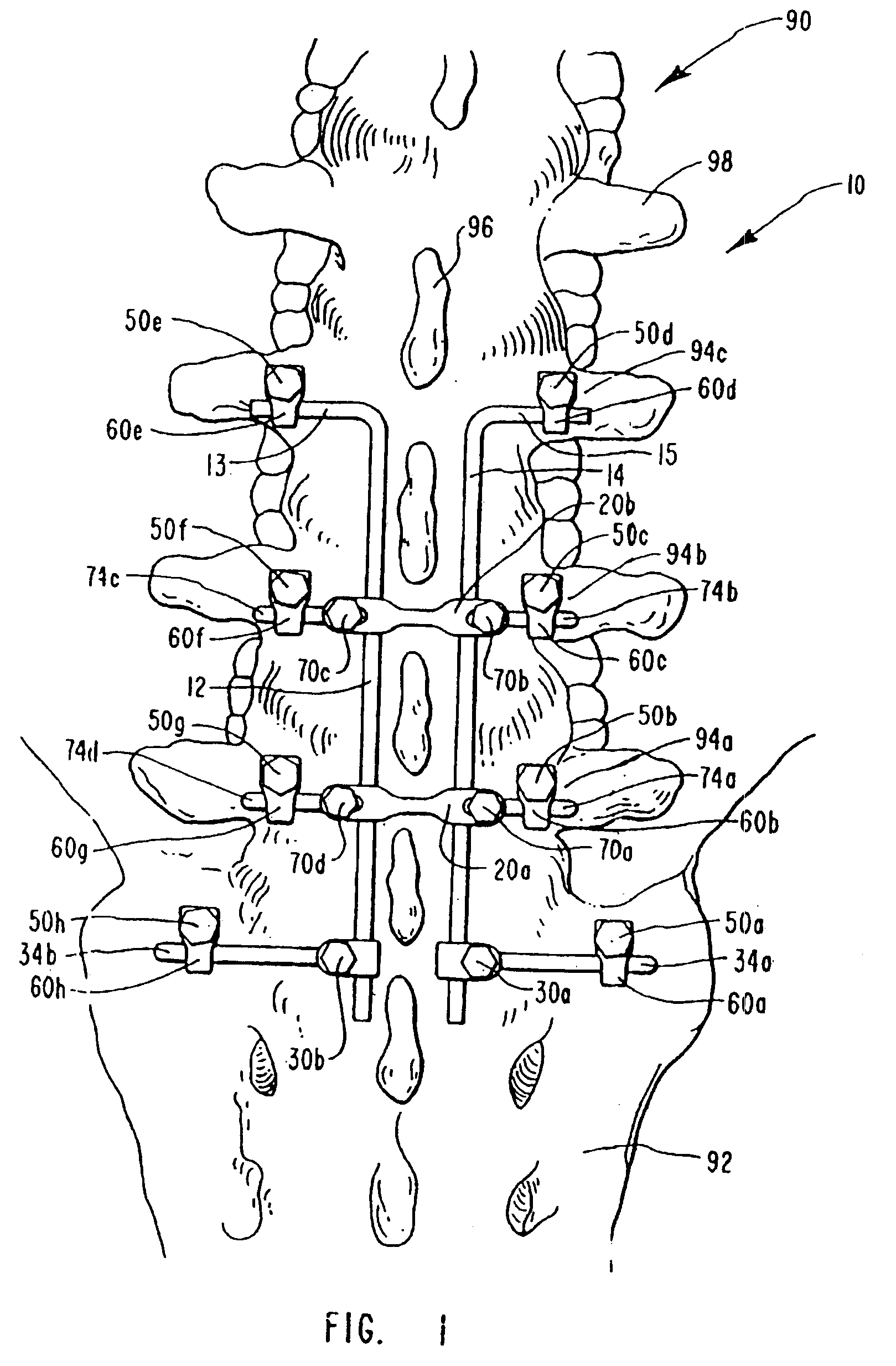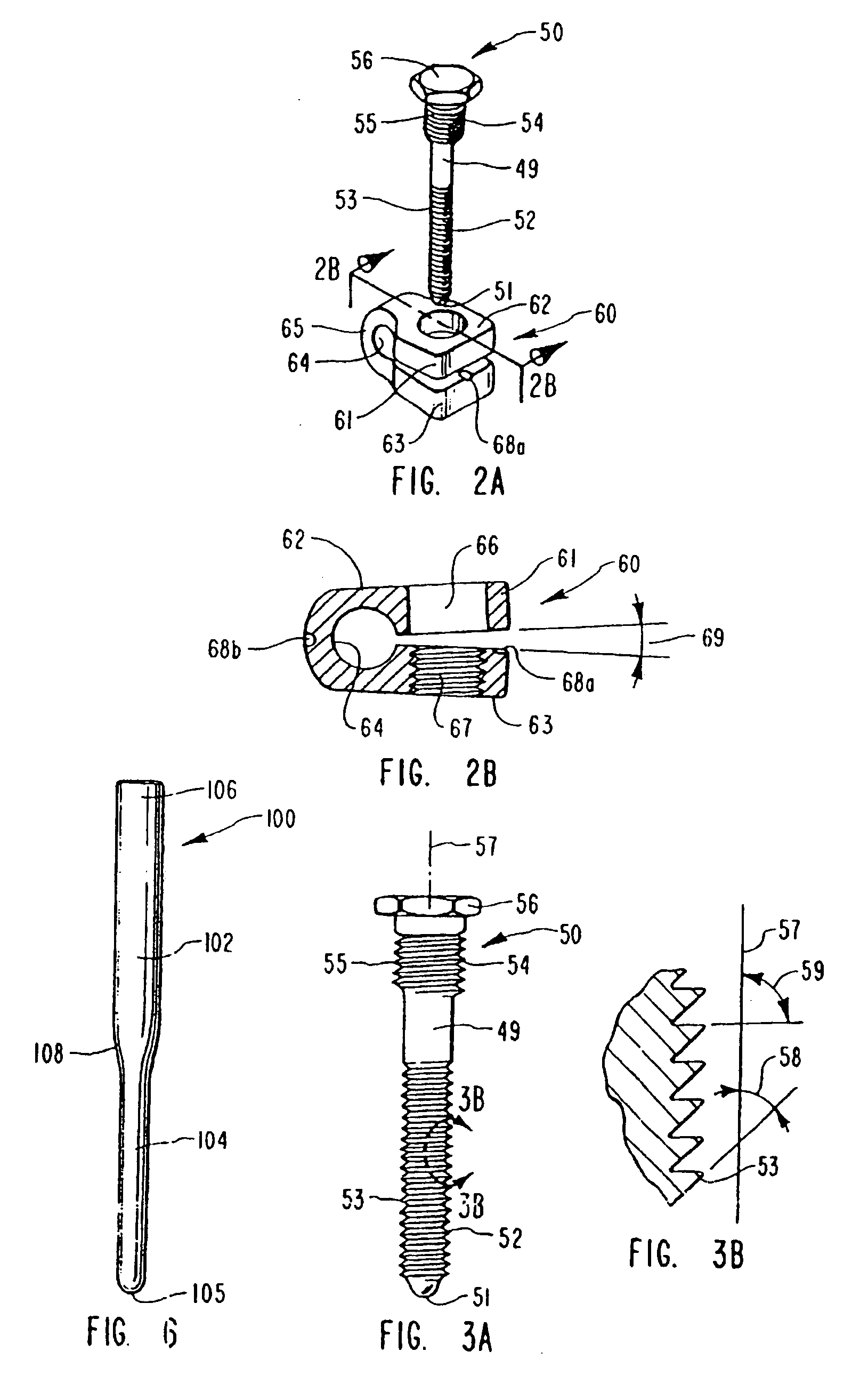Spinal fixation apparatus and method
a technology of fixation apparatus and spine, which is applied in the field of medical instruments, can solve the problems of increased degenerative change rate, traumatic injury, and excessive force on the spine, and achieve the effects of reducing the risk of traumatic injury, facilitating implantation, and being easy to manipula
- Summary
- Abstract
- Description
- Claims
- Application Information
AI Technical Summary
Benefits of technology
Problems solved by technology
Method used
Image
Examples
Embodiment Construction
[0037]The invention is best understood from the following description with reference to the drawing wherein like parts are designated by like numerals throughout and taken in conjunction with the appended claims.
General Discussion
[0038]The underlying rationale for spinal fusion is to (a) restore the integrity of the spine or to replace missing bone stock, i.e., fracture, tumor, infection; (b) produce an arthrodesis that will suppress undesired movement between two or more bony elements that are the source of pain; and (c) maintain correction of spinal deformity or to prevent progression of deformity. In general, this arthrodesis is produced by using a bone graft that will heal and mature thereby binding the involved elements intimately. Arthrodesis requires in most instances a period of immobilization to achieve this end. Importantly, the key factor in predicting successful fusion is the amount of instability; that is, if instability is moderate and bone stock good,the proportion of...
PUM
 Login to View More
Login to View More Abstract
Description
Claims
Application Information
 Login to View More
Login to View More - R&D
- Intellectual Property
- Life Sciences
- Materials
- Tech Scout
- Unparalleled Data Quality
- Higher Quality Content
- 60% Fewer Hallucinations
Browse by: Latest US Patents, China's latest patents, Technical Efficacy Thesaurus, Application Domain, Technology Topic, Popular Technical Reports.
© 2025 PatSnap. All rights reserved.Legal|Privacy policy|Modern Slavery Act Transparency Statement|Sitemap|About US| Contact US: help@patsnap.com



